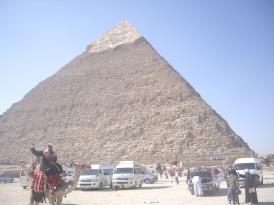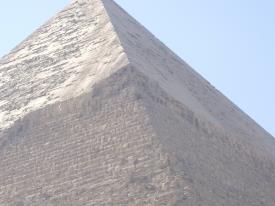****RUNNING PICS TO COMPLEMENT THE QUESTIONS ABOVE****
STRATA
COUNCILS
EDUCATION & SOLUTIONS
THROUGH OPTIONS
.
2. What is the history of stucco…its
formation and its finishing?
Stucco is an external finishing technique that has been used since Bible times…it is mentioned in the Bible and probably dates back to the Egyptian era or even earlier. The earliest types used mud, then lime and straw and other combinations. But about 250 years ago they developed Portland type cement….the name was coined in the 1800’s for the product found on the Isle of Portland in the British Isles.
Modern history. (approximate time periods)
1900-1935 ………….. Cedar lathe strips with lime, sand and horse hair spread by trowel through the lathe and broomed to a rough surface, then cement based slurry at times with small pea gravel in suspension thrown onto the surface. This was later washed with a lime mixture to create a white or coloured surface.
1935-1955 ………….. Cement applied onto cedar lathe or onto chicken wire. This was usually 20 gage galvanized wire in an octagonal shape and one inch openings…with the wire twisted to make the join. This laid flat on the wall and had the mixture spread over top of it. Because it laid flat on the wall the stucco had a tendency to slide downward when applied and so the plasterers of that era
(as applicator tradesmen were called) increased the amount of cement to make the mixture more adhesive, more sticky….so that it would stay in place until it dried. Anyone who has tried to cut or drill cement, or hammer a nail into a building stuccoed in and around 1950 knows that the cement is harder than a rock. These finishes were decorated with a trowel, or the cement was dashed on with a brush or a broom and then could be trowelled flat on the surface. Afterwards it was coated with a lime wash…or white wash as it was called.
1945-1960 …………cement applied onto cedar lathe or applied on chicken wire nailed all over onto a fir ship lap sheathing…… then broomed horizontally to create mechanical key. After drying another mixture of cement with a higher concentration of lime was applied and smoothed to level…. and then while still fresh had aggregate dashed into it with a scoop. This aggregate was mostly small stones….in the early part it was just gravel washed round by a river or by the ocean. We often find sea shells and other crab legs etc in the earliest examples of this style of finish. At times the stucco mud was coloured with some kind of the dye to make it a bit beige or yellow or pink. Later white crushed rock was used to impregnate the surface. Later in an effort to incorporate some colour in the finish, glass…usually brown beer bottles, or green seven up bottles and occasionally with an exotic house a bit of blue from milk of magnesia bottles. Later still, bits of black shiny material…like obisidian rock… were added….it was termed “Salt and Pepper dash”... quite a bit of salt and just a little pepper.
1960-1975 …………..cement applied onto stucco wire. This was the introduction of a wire mesh specifically for stucco. This was a welded wire lathe in 2 inch squares ….usually 16 or 18 gage…with 18 gage the more popular because it was easier to cut and to install. It had a little bend in the wire that allowed the wire to stand away from the wall to some extent, which, in turn allowed the stucco to be spread in behind the wire. This permitted the material to be reinforced by the mesh, and not just attached to the wall by it. This also allowed the material to adhere more easily and not slide down. At this time the amount of cement in the mixture was modified to include more sand. This made for a less dense cement….softer and less brittle. The finish coat would have more lime applied to it….because lime makes a mixture very sticky….easy to adhere stones to it. During this era….coloured rock was mined and crushed. We began to have access to green…called chartreuse…to browns…copper tan….even to rose colored rock….pink ice. These finishes proved to be very durable and did not have the hazardous broken glass in it.
1965-present day ………. white cement became readily available in British Columbia. This white cement was said to originate in California….and consequently the finishes that it generated were called “California Stucco”. This cement, along with crushed 'marbelite' sand or 'dolomite' sand, made a white mixture. Now the cement base coat was applied in two layers….the scratch coat…which would impregnate the wire mesh and be broomed rough for adhesion of the second coat. Then the second coat was applied over the scratch coat….this was at times called the brown coat…(this was a term that came from interior plastering…where the second coat was brown in color.)…or the double coat. This coat was usually “darbied”…this was a 3 foot long flat trowel with two handles that would level the second coat to a nice flat surface. Sometimes it was lightly broomed for adhesion…but usually it was left fairly flat and smooth. At times those who wanted to cut corners (oh yeah… they are always around…) would do the cement base coat in just one layer. Because it had to be thick enough to cover the wire it would usually slump down a bit or a lot….depending upon the consistency of the mixture…and leave a lumpy wavy base coat that showed the wire pattern in it. Once the base coat was dry….usually a week or two….then the finish coat of white cement was applied over top of it…..usually a wavy base coat would show through. This white cement coat was troweled on thinly….usually about 1/16 of an inch thick to colour the wall and then it was finished. Finishing in the beginning was dashing on some blobs and then trowling them down a bit….creating flat islands on a flat white base…..or the white cement base was floated with a sponge float and a bit of water to create a sandy swirled finish…..or the white cement was troweled a bit thicker and then using a trowel it was fanned out to form half moon shapes in a kind of 'Spanish' texture. Beginning in about 1968-70 the Brandon family began to experiment with trowel textures….using the trowel to put a design on the wall. This often took the form of a little “wave” of stucco applied on the white base. This was pretty “gunky” in the beginning (we then thought we were artists) and it was later imitated by nearly all the tradesmen in the industry in Vancouver and within a few years all over B.C. It probably had been initiated as well in other areas outside of Canada… about the same time….as tradesmen experimented with the possibilities of the new white cement finishes. But in B.C. we were the first to experiment with these trowel textures.
Later we began to colour this white cement mixture. The initial colours included "Persian Yellow"….a kind of mustard colour; "Alaska Brown"…which was a kind of a beige in its lightened state….but quite a bit pink…in certain lighting, and "Chocolate Brown…which was slightly mauve or purplish in its light colour. A three choice option…like the old milkshakes…...chocolate, strawberry and vanilla. In addition to those 'modern' colours, there was "Lamp Black"….which could be mixed in with these colours to darken or blend to different shades. These dyes were actually mortar dyes and not manufactured for stucco.
By the late 1970’s, early 80's, commercial stucco colours began to appear in about 10 different shades. These were then combined with the white cement and different finishing styles to produce the finishes that are still used today.
Beginning in the early 70’s we began to experiment with additives to standard stucco mixes. We started with just white or yellow carpenters glue and then moved on to experimenting with some of the kinds of additives that were appearing in thin set time mortars. New generations of adhesives were being developed and we imported many of these to enhance stucco. By 1971 we attempted to recoat an old beer bottle stucco home from the 40’s. This finish is still attached today in North Vancouver. We later modified it a bit further and in 1972 attached an 'over-stucco'…or restucco in Deep Cove in North Vancouver that is still going today on its original Persian Yellow colour…38 years of rain and storms and still fine. Later in the early 1980’s we imported fiberglass filaments from New Jersey….where they were experimenting with filament reinforcing for concrete. We incorporated these into our stucco mixture to reinforce the overlay type of stucco that we had begun to concentrate on.
We eventually designed and manufactured the Pro-Tech Stucco formulation. It produced a more flexible, more adhesive, more weather resistant type of stucco specifically created to refinish existing stucco building. We franchised our operation in 1990 and this formulation formed the basis of our “Restucco with a Lifetime Guarantee”. Our company name became “Stucco Doctor”…since we concentrated only on stucco care and restoration…."healing old and sick stucco".
Today’s textures are a bit more refined with a low relief texture…the colours are many and varied….and the mixtures have become more complex. We worked with 'Imasco' minerals to create the first real colour chart for colours. They studied our modified cement mixtures and no doubt researched other countries to see what was being done with the standard mixtures and then began to offer an enhanced mixture for the stucco finish coat…which combined together all of the sand, cement, lime and additives for the finish.
They later developed a base coat concentrate that was modified cement with fibers and other goodies that allowed for a one coat base coat of ½ inch thick with no or with little slump on the wall. This is also done in a two coat process with 5/8 inch base coat thickness. Finish coats now are done with artisan colours which are a grayed cement and additives that allow for deeper colours to be installed….again in harmony with the popular trend of the day.
In the early 80’s we began to see a new special type of stucco over Styrofoam to insulate the wall from the outside…..EIFS…..pronounced ….EEFS……not EFIS as some say….the meaning of this is External Insulation Finishing System. It is thin modified stucco placed on a Styrofoam sheet, usually reinforced with fiberglass or some other kind of synthetic mesh. It was expensive and so it was installed on only the best of buildings. Because of the trend to use it on high end buildings, and the common desire to imitate high end buildings when you really cannot afford one, then the tradesmen began to experiment with ways to make a building look like it was EIFS but without the cost of EIFS. The tradesmen simply prepared the building up to the second grey coat just as before….but now instead of putting on a cement based finish coat….he applied an acrylic synthetic finish…..plastic stucco was born. This is the conclusion of the basic history of stucco during the last century.
* CLICK ON 'OK NBUTTON' TO RETURN TO 'FREQUENTLY ASKED QUESTIONS' PAGE *.
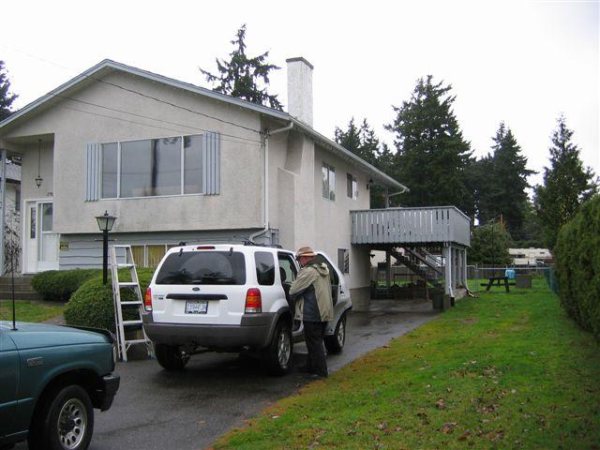
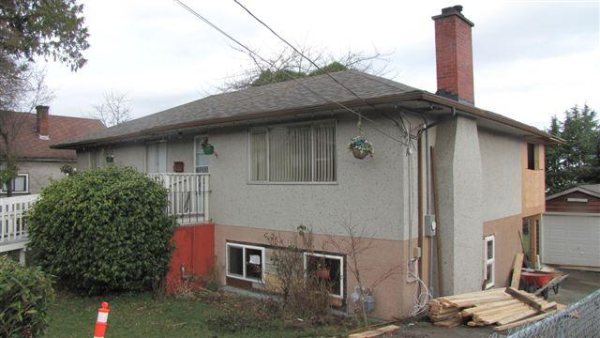
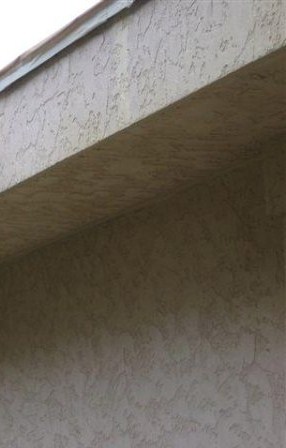
At times the stucco mud was coloured with some kind of the dye to make it a bit beige or yellow or pink. Later white crushed rock was used to impregnate the surface.
bits of black shiny material…like obisidian rock… were added….it was termed “Salt and Pepper dash” ...quite a bit of salt and just a little pepper.
This white cement coat was troweled on thinly….usually about 1/16 of an inch thick to colour the wall and then it was finished.
